5 Ways to Perfect Your Ballet Solo: Ultimate Guide
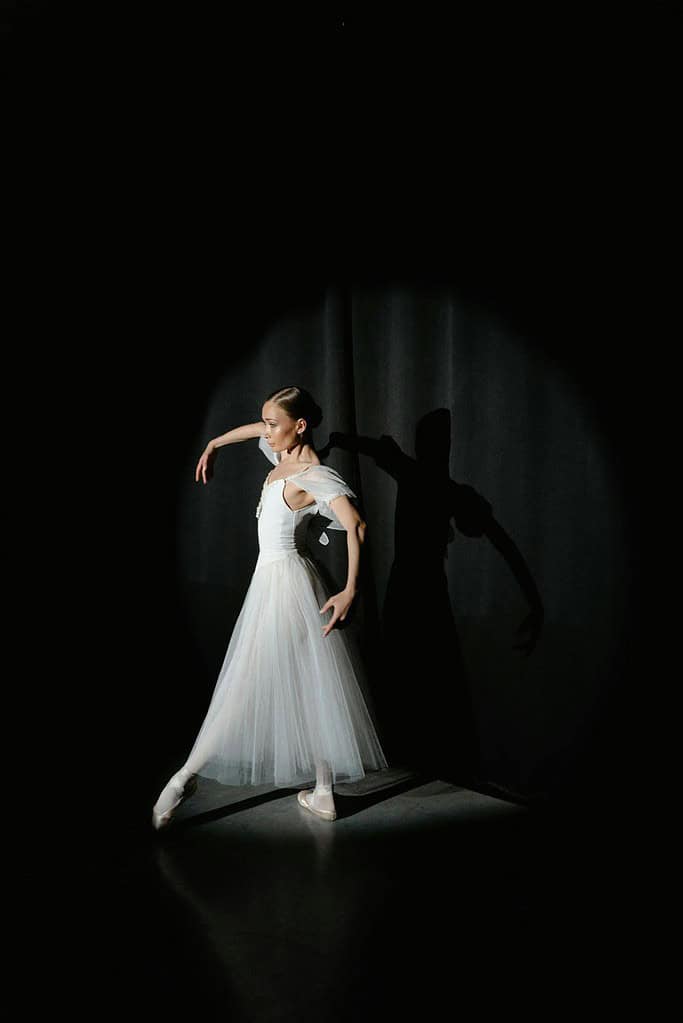
When the opportunity arises for you to perform a ballet solo on stage, it’s the perfect moment to truly showcase yourself as a dancer.
However, performing a ballet solo can be both exhilarating and nerve-wracking!
Mastering your ballet solo is key to demonstrating your:
In this blog post, I’ll help you perfect your ballet solo performance, boost your confidence, and leave a lasting impression on stage.
WHAT IS A BALLET SOLO?
A ballet solo is a dancer’s moment to perform alone on stage, presenting a piece of choreography that showcases their technical and artistic abilities.
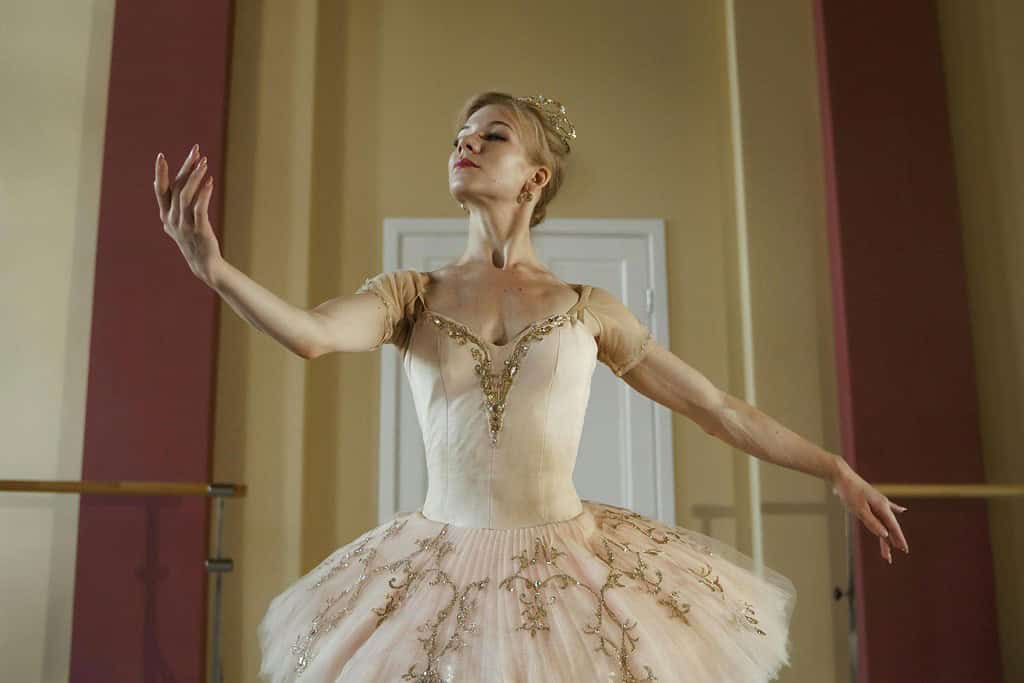
Often performed by principal dancers or soloists in leading roles, solos can be both exhilarating and daunting.
With no one else to share the spotlight, it can feel vulnerable, but this opportunity is a significant milestone in your development.
It signifies that you have reached a level of skill and expression where you can carry a portion of the story on your own, with the company’s or school’s trust and confidence.
5 WAYS TO PERFECT YOUR BALLET SOLO
The best way to perfect your ballet solo is to:
#1 UNDERSTAND THE CHOREOGRAPHY
When learning the choreography for your ballet solo, it’s normal to feel challenged or find certain parts difficult.
Ballet is a process, and that’s exactly why we rehearse before performing.
Alongside the technical details, it’s equally important to understand the context of the entire ballet, not just your solo.
This broader understanding helps you connect each movement with the story, making your performance more cohesive.
To make the learning process smoother, break your solo into smaller, manageable sections you can consistently work on.
Focus on the choreography’s technical precision and emotional narrative from the start.
By doing this, you’ll be able to progress steadily, and you’ll already have a sense of the feelings and emotions you need to portray as you master each part.
#2 PERFECT YOUR TECHNIQUE
As you’ll be dancing alone, your technique needs to be strong enough to support both you and your performance.
Remember your foundational training first by focusing on basics such as:
Trust me, when your technique is strong, everything in ballet becomes easier.
#3 ENHANCE YOUR PERFORMANCE QUALITY
To truly enhance your performance quality, it’s essential to consider all the aspects that make a ballet production captivating and memorable for the audience.
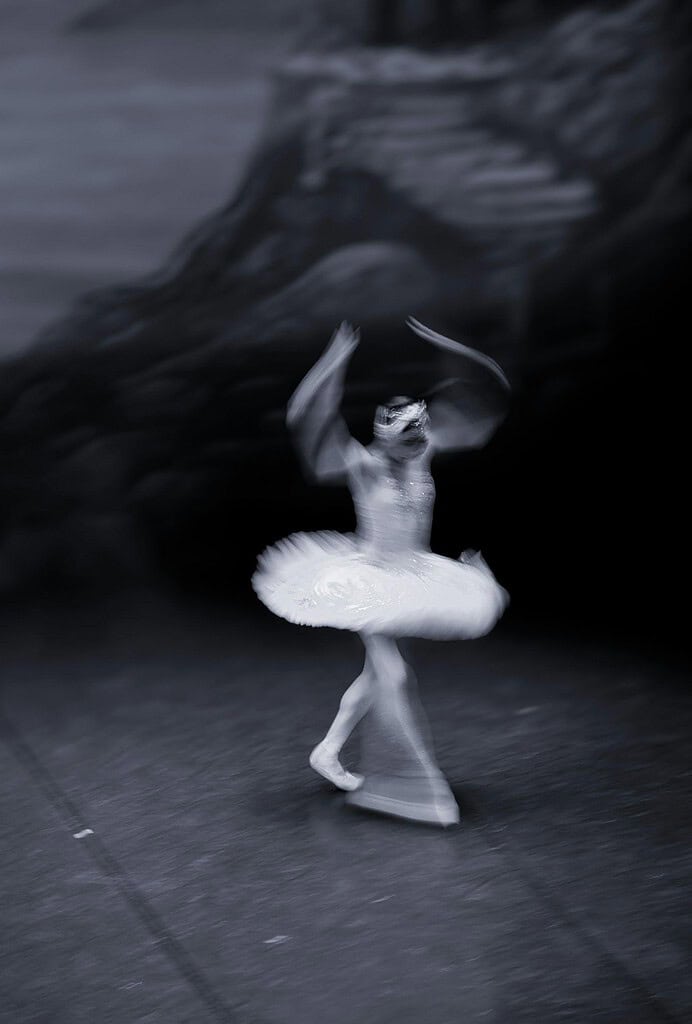
CONNECT WITH THE MUSIC
Your solo music plays a crucial role, as it’s often selected to harmoniously complement the choreography and enhance the overall performance.
It can serve as a guiding force, helping you connect both the technical and emotional aspects of your dance.
By tuning into the nuances of the score, you can emphasise different movements and create dynamic contrasts.
This is especially true when you pay attention to the phrasing, rhythm, and emotional highs and lows in the music.
So listen closely to the music as it can profoundly transform your dancing and enhance your performance quality.
BODY LANGUAGE
Your body language is a powerful tool for expressing emotion.
Every gesture, stance, and movement can convey a narrative without the need for words.
By being mindful of how you walk, stand, and interact with the space around you, you can communicate your character’s feelings and intentions more effectively.
Small details, such as the way you hold your arms or the tilt of your head, can add depth and authenticity to your portrayal, making it much more authentic and believable for the audience.
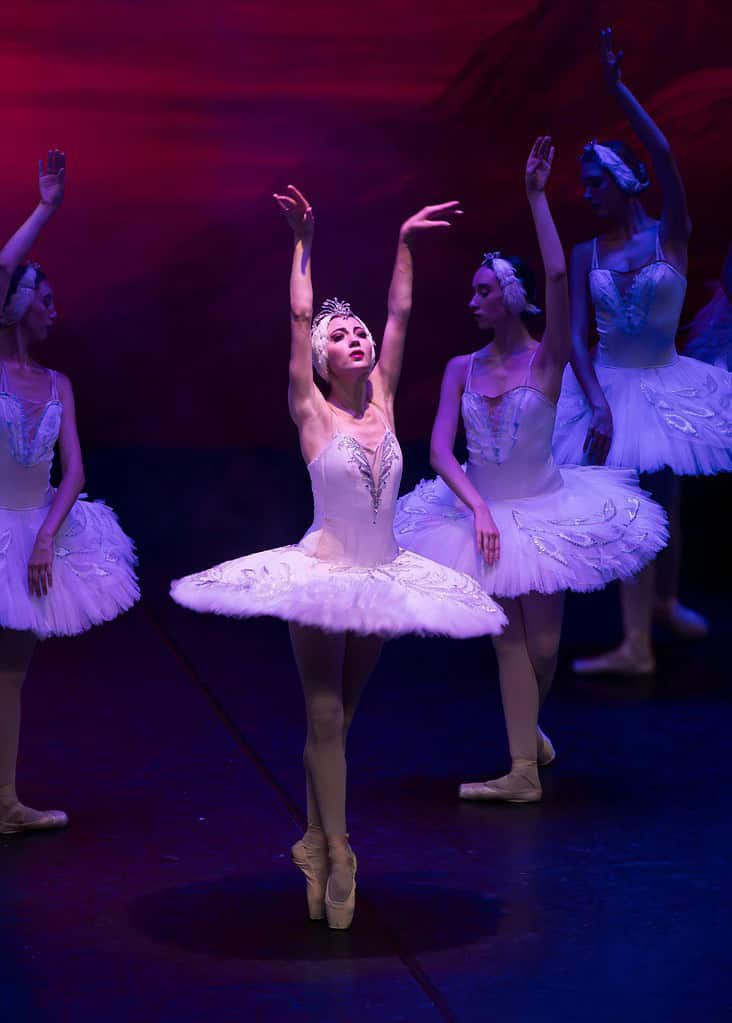
SEEK FEEDBACK
While you will receive feedback during rehearsals, seeking input from fellow dancers can also be incredibly valuable.
Ask them how they perceived your performance; what aspects they think worked well, and which areas might need improvement.
Embracing feedback is a crucial part of your growth as a dancer, but it’s important to balance this pursuit of improvement with self-appreciation.
Don’t forget to acknowledge your achievements, no matter how small!
Remember, feedback is most beneficial when it is used positively.
#4 BUILD CONFIDENCE
It’s kind of a no-brainer, but you’re going to need some confidence to dance alone on stage.
I recommend applying the following tips to help build your confidence, manage nerves and make your ballet solo enjoyable, not scary!
VISUALISATION
Taking a moment to close your eyes and visualise your performance can be a powerful tool for building confidence.
Imagine every aspect of your solo:
When you visualise your performance in this way, you’re not only creating a mental blueprint of success, but you’re also instilling belief in your abilities.
The more vividly you can picture your performance going well, the more likely you are to embody that confidence when it’s time to step on stage.
Seeing yourself succeed can alleviate anxiety and replace self-doubt with assurance.
PRE-PERFORMANCE RITUAL
Another effective way to build confidence and alleviate the nervous energy is to establish a pre-performance ritual.
A pre-performance ritual doesn’t have to be elaborate; it can be as simple as engaging in everyday activities that help you feel grounded and prepared.
This could be as simple as putting on your makeup, listening to music, eating a satisfying meal, or positive affirmations.
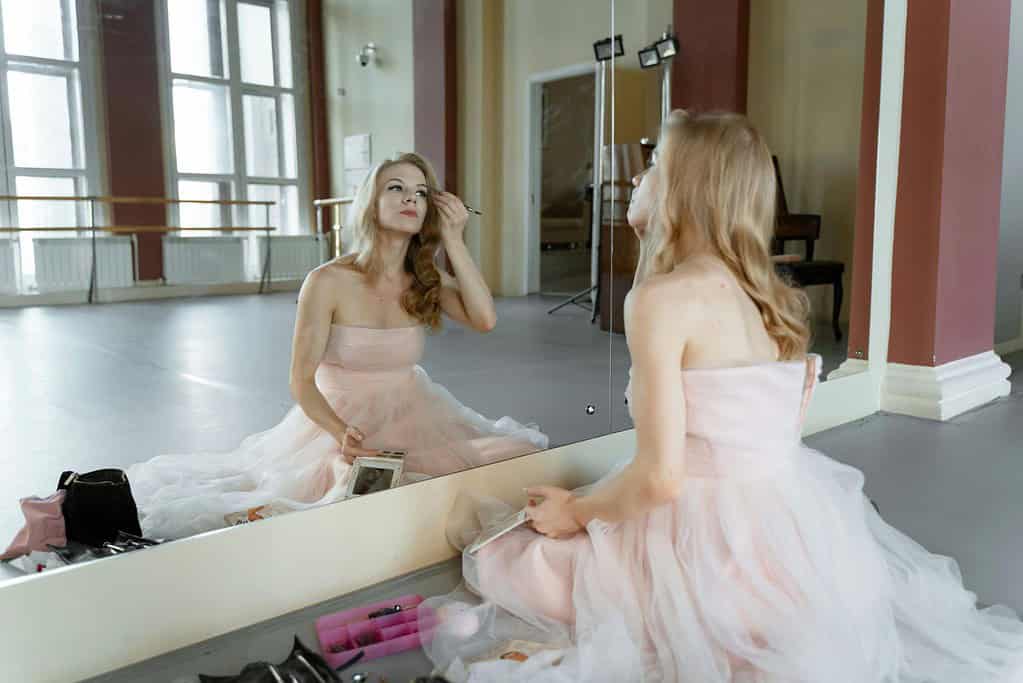
Ultimately, the key is to find a pre-performance ritual or routine that resonates with you to create a familiar and calming environment that helps ease nerves and sets you up for success.
DON’T BE AFRAID TO MAKE MISTAKES
One of the best parts about performing a ballet solo is that it’s perfectly okay to make mistakes.
Most of the time, the audience won’t even notice if something goes wrong.
Remember, every dancer has experienced a slip-up at some point; what truly matters is how you carry on from it.
I remember one performance where I was dancing Swanhilda in the ballet Coppelia.
During a series of solos, my pointe shoe ribbon broke and started flapping around, leaving me without the support I needed.
Despite this challenge, I kept going, putting forth my best effort. In the end, the audience appreciated my determination and performance.
It was a valuable lesson in resilience. Sometimes, it’s not about perfection but about how you handle unexpected moments on stage.
#5 PREPARE FOR THE STAGE
When the time comes to perform on stage, take a moment to familiarise yourself with the entries and exits, various props and sets, and of course, your spacing.
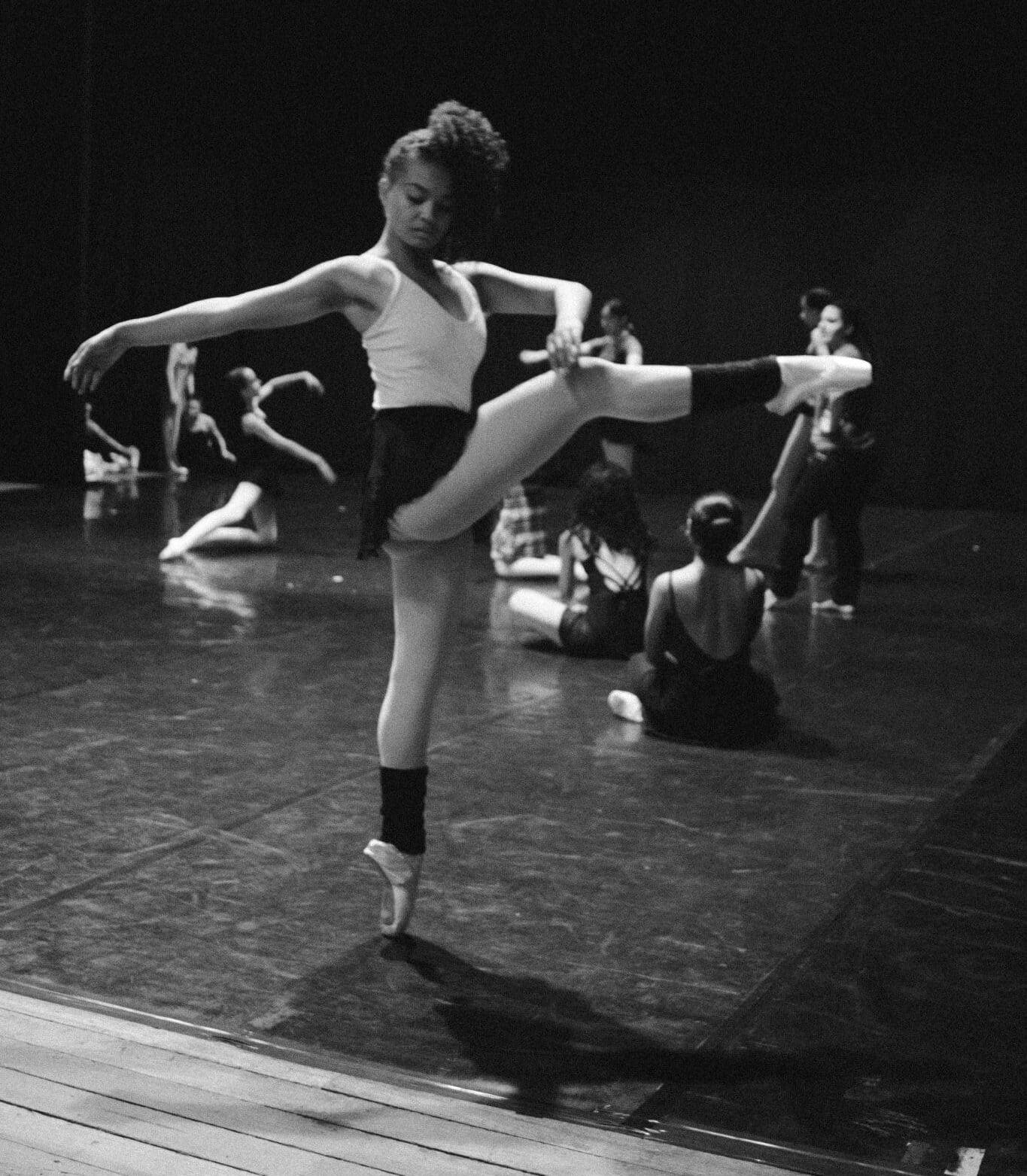
The stage and studio are far from similar environments, and understanding how to navigate the space is crucial for a successful performance.
BALLET SOLO – FAQS
WHAT IS A SOLO CALLED IN BALLET?
A solo in ballet is often referred to simply as a ‘solo’ or more formally as a ‘variation’.
WHY DO DANCERS PERFORM BALLET SOLOS?
Ballet solos are performed by dancers as a way for choreographers to emphasise a pivotal moment in the story.
This could be to:
WHAT IS THE HARDEST BALLET SOLO TO DANCE?
What may be challenging for one dancer could be easy for another, so ultimately, the most challenging solo is one that pushes a dancer beyond their comfort zone.
HOW CAN I OVERCOME STAGE FRIGHT BEFORE PERFORMING MY BALLET SOLO?
To manage stage fright, it’s essential to be well-prepared, incorporate deep breathing exercises before stepping on stage, and learn to embrace and channel your nerves into positive energy.
HOW OFTEN SHOULD I PRACTISE MY BALLET SOLO?
Dancers are typically provided with ample rehearsal time to practise their solos before performance day.
You might have the opportunity to rehearse daily, but if not, consider dedicating extra time to work on specific areas that you find particularly challenging after class or during breaks.
While practice is crucial for mastering your performance, it’s equally important not to overdo it.
Taking a step back can sometimes provide the recovery and perspective needed to step forward in your dancing.
WRAP UP
Ballet solos are a wonderful opportunity to showcase your individuality and bring something unique and special to the stage.
The beauty of performing a solo is that you don’t have to look or dance like anyone else.
It’s your moment to fully embrace the choreography, connect with the character, and let your artistry shine.
In this space, you can truly express yourself and allow your dancing to stand out, creating a performance that is authentically yours.
By following these tips, you’ll be well on your way to delivering a performance that truly resonates with your audience.
The only thing next for you to do is go out there, enjoy your moment in the spotlight, and shine on stage!







